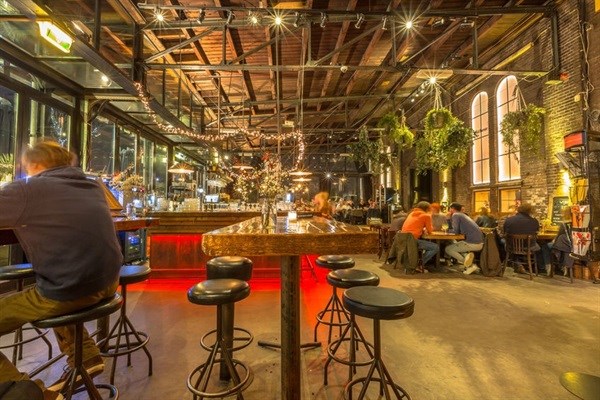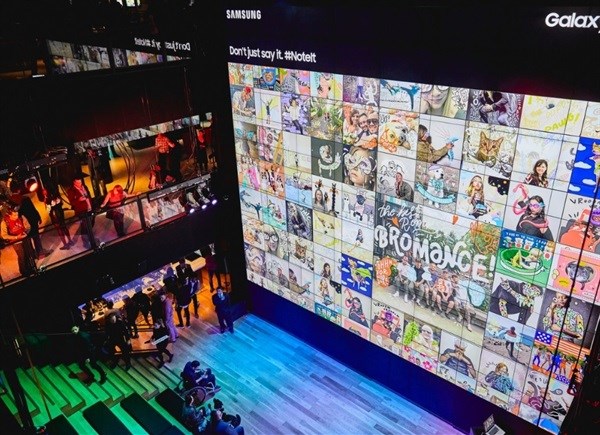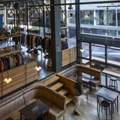Marketing & Media trends
Industry trends
BizTrends Sponsors
Trending
#BizTrends2018: The call for authentic, experiential retail design

This is according to Dave Nemeth, founder, trend forecaster and business consultant at Trend Forward. “Even though you may be in the clothing business, you have to be in touch with what's happening in politics, in innovation, in the motor industry,” he said at the ATF Trade Expo held in Cape Town towards the end of last year.
“Too often retailers and designers get caught up in micro trends, guided by the false belief that it's going to be the next big thing. It’s vital to identify the macro trends, which will continue to evolve, rather than micro trends that are here today and gone tomorrow.”
According to Nemeth, the way we go about sourcing trends is flawed. Without fully understanding a trend, we regurgitate what we see elsewhere. What this leads to is a contrived form of design, and the modern conscious consumer is all too aware of it.
“We're in a state of design and retail burnout; and it doesn’t affect just South Africa, it’s a global issue.” Why then, Nemeth asks, do we rush off to Europe or the States twice a year to see what's happening in the retail world so that we can bring it back home to replicate it? We’re waiting for the next big thing when we should be creating it.
The anti-trend
As consumers search for authenticity in the brands, products and services they buy into, there’s a resultant rebellion towards those that are mass-produced and inauthentic in their design. “We want to be treated as individuals, so there’s a backlash towards clothing and spaces that follow a specific theme. People are beginning to realise that it's contrived.”

Another reaction to mass-production is that consumers have developed an affinity for the past. "Designers and product developers are now going back and drawing inspiration from age-old techniques and materials used to create things.” This fascination with the past is evidenced by the popularity of brands like Smeg, the revival of the vinyl record business and the renewed interest in craft beverages and artisanal food.
Experiential retail
It’s no longer enough for retailers to just sell products, and yet many local stores have retained the warehouse-like structure by offering little more than product and price.
Experiences now outweigh things – people are spending more money on experiences than on material goods.Nemeth is adamant that brick and mortar retail will not die; purely online stores like Amazon and Yuppiechef have in fact opened physical outlets. But the in-store environment needs to evolve to provide customers with exciting experiences. He believes that retailers have largely failed at integrating digital into the in-store environment, saying that “most of the time we're just replicating what we find on a website.”
An example of a brand getting experiential retail right is Samsung with its 839 flagship ‘store’ located in New York City's Meatpacking District. The space is designed to let visitors try out Samsung products, but employees don’t encourage guests to buy anything and the store has limited inventory on site. It’s equipped with a photo booth, concert stage, living room, restaurant and various installations that change according to season.

“This Samsung store gains customer loyalty and engages with its audience without shoving product and price down people's throats.
"We have a great excuse at the moment, we blame the economy. But while we’re moaning about that – in our stores filled with product and price – there are other brands that have entered the market which have expanded their footprint at a rate of knots.”
Diversification
Nemeth's advice for the imminent future:
Don't be scared of collaboration and co-creation with brands that may sell a completely different product to your own.Furthermore, he advises that in a tough business environment, retailers will need to learn to diversify. A good example is Woolworths and the opening of its Now Now takeaway restaurants.
“[Diversifying] doesn't mean throwing the baby out with the bathwater and going in a completely new direction. Woolies has been under pressure, like many other retailers, but they scoured the market in search of new opportunities. Using their understanding of food and the supply chain they already have in place, they opened up their own fast food stores, not attached to Woolworths but in areas where there are other fast food outlets.”
“The only guarantee for the future of business and retail is that there is no certainty. Every single day there's a disruption that's turning business on its head. The future is now, we’re living in it.”













